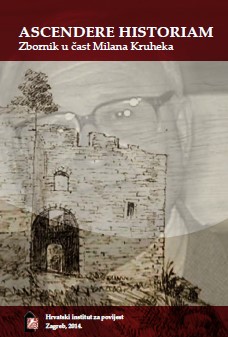Od bilješke jednoga povjesničara do arheološkoga nalaza
From the note of one historian to the archaeological founding
Author(s): Marina Šimek
Subject(s): Archaeology, Architecture, Local History / Microhistory, Military history, Security and defense, The Ottoman Empire
Published by: Hrvatski institut za povijest
Keywords: Hum; the Humščak hill; čardak; anti-Ottoman stronghold; wooden architecture; archaeological artefacts; early modern period;
Summary/Abstract: Elongated and relatively strait the Humščak hill is the integral part of the relief of the south-western part of the Varaždin County that is the integral part of the micro-region northern of Breznički Hum. The landscape of this region is mostly composed of the hills and lower mountains with the average altitude between 150 and 300 meters. Although covered by the forest, the Humščak hill is dominant hill in the landscape and it straits from the east to west with the highest peak at 370 meters. This is an excellent strategical position with great control of the neighbouring areas and with plenitude of water resorts – all of this pinpointed the Humščak hill as a possible archaeological site. First artefacts were recovered from the surface layers in 2001, but the first archaeological probes were done in 2010, while full scale archaeological excavations started two years later. It was the footnote no. 406 in the Milan Kruhek’s book “Krajiške utvrde i obrana Hrvatskog kraljevstva tijekom 16. stoljeća”, in which the čardak on the Hum hill was mentioned, that brought the attention of the archaeologist, who conducted field surveying, archaeological probing, topographic and toponomastic analysis in order to define the possible position of the čardak on the Hum hill mentioned in the historical documents. During the two archaeological campaigns on the presumable location of the čardak, the remains of the architectural sets as well as numerous movable artefacts were found. In spite of the fact that excavated architectural remains are only fragmental, the author argues that these remains confirm that on that position the wooden object had existed. The excavated architectural remains were remains of the stone wall, the stone covered passage, the flooring made of daub as well as two holes in the ground used for the settling of the perpendicular wooden pillar. Among the movable artefacts, which are still not processed, there are numerous iron nails, the examples of the simple ceramics, the vast quantity of the plate stove tiles with square openings, as well as many other different types of stove tiles from the upper coronal of the stove. Furthermore, the various metal artefacts were also excavated such as lead bullets, horse equipment (ring for attaching the saddle), and horseshoe, hunting arrow, buckle and bronze fibula. Finally, the luxurious artefacts are rare, but two biconical glass bottles, as well as glazed decorated glasses and a piece of faience. The spectra of the artefacts very well fits in the everyday life of the 16th century guards that served on the Humščak hill during the 16th century.
Book: Ascendere historiam: Zbornik u čast Milana Kruheka
- Page Range: 447-462
- Page Count: 16
- Publication Year: 2014
- Language: Croatian
- Content File-PDF

